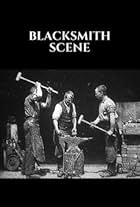Traffic Crossing Leeds Bridge
- 1888
- 1m
IMDb RATING
6.6/10
3.4K
YOUR RATING
A shot of people walking on The Leeds Bridge.A shot of people walking on The Leeds Bridge.A shot of people walking on The Leeds Bridge.
- Director
Photos
Storyline
Did you know
- TriviaDirector Louis Aimé Augustin Le Prince' disappeared under suspicious circumstances whilst on a train traveling back to France. He was never seen again.
- ConnectionsFeatured in The Story of Film: An Odyssey: Birth of the Cinema (2011)
Featured review
Similar to Bill Sweeds movie: 'A ship runs across the ocean at 5 miles an hour.' In this case, though, we see a bunch of old fords and Chryslers being piloted. And on the cement corner, the mayor is shown saluting everything directly around him. Then he turns around and a camera barely catches his expression of bewildering confusion.
Details
- Release date
- Country of origin
- Language
- Also known as
- Leeds Bridge
- Filming locations
- Production company
- See more company credits at IMDbPro
- Runtime1 minute
- Color
- Sound mix
Contribute to this page
Suggest an edit or add missing content















